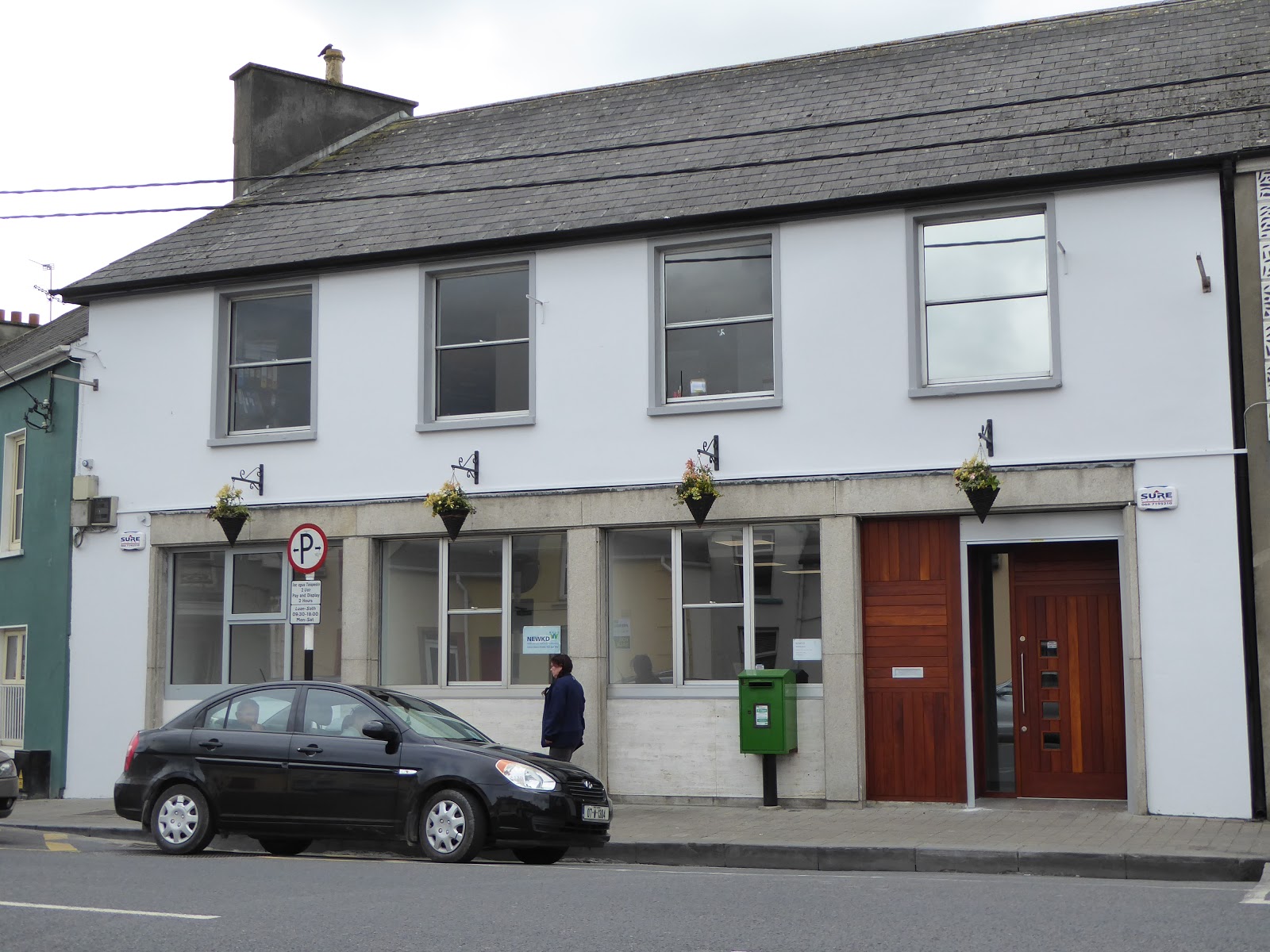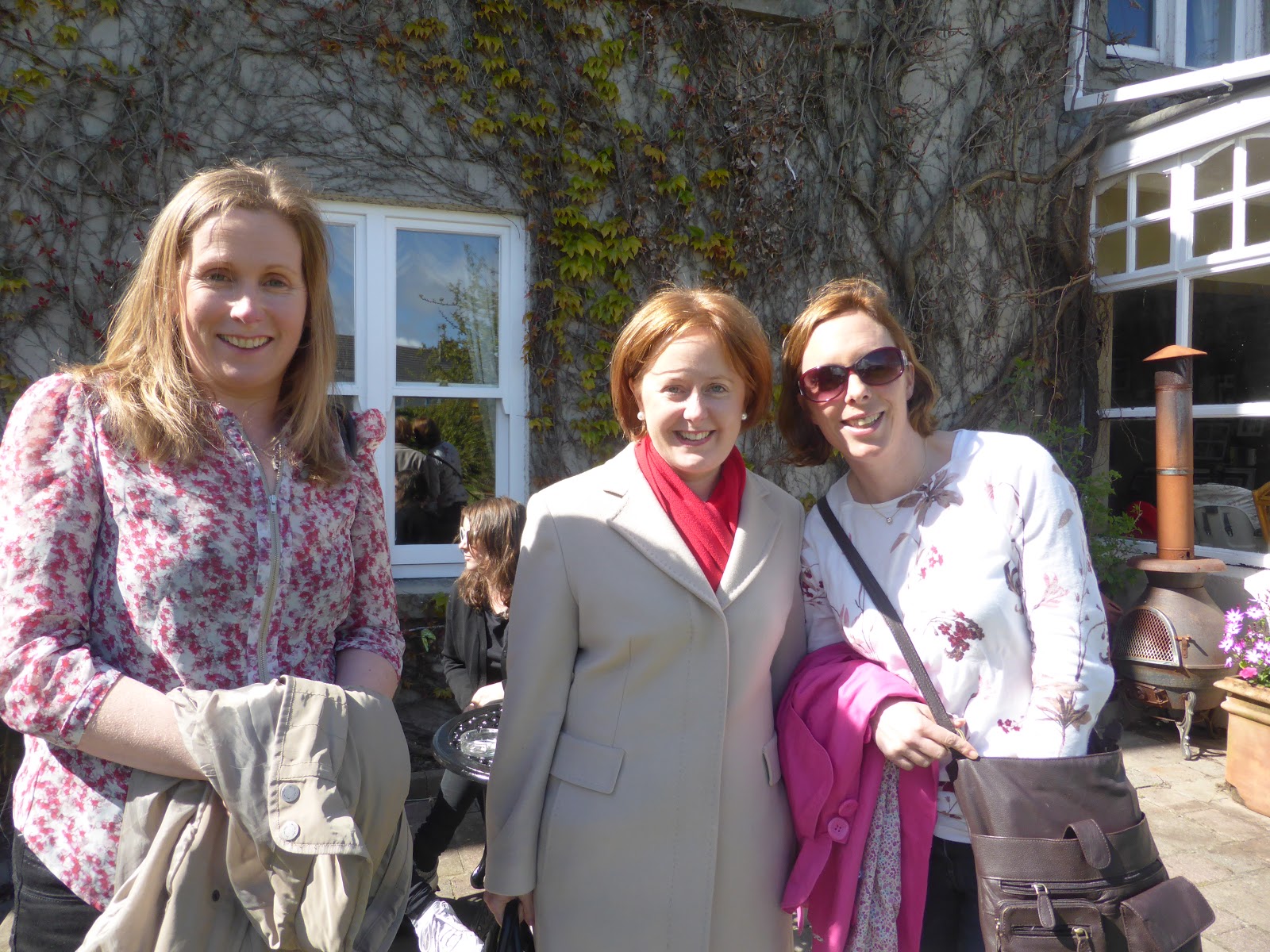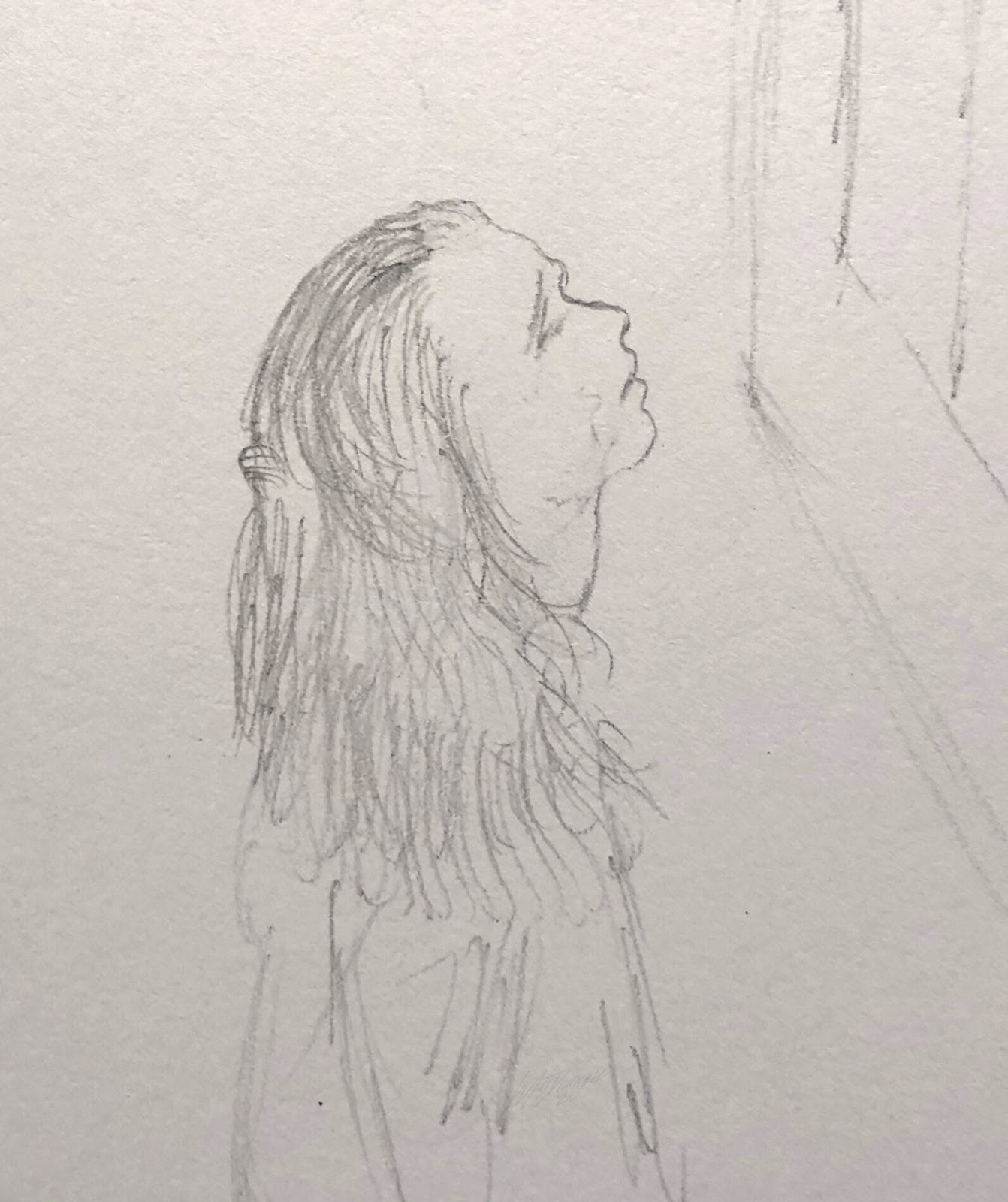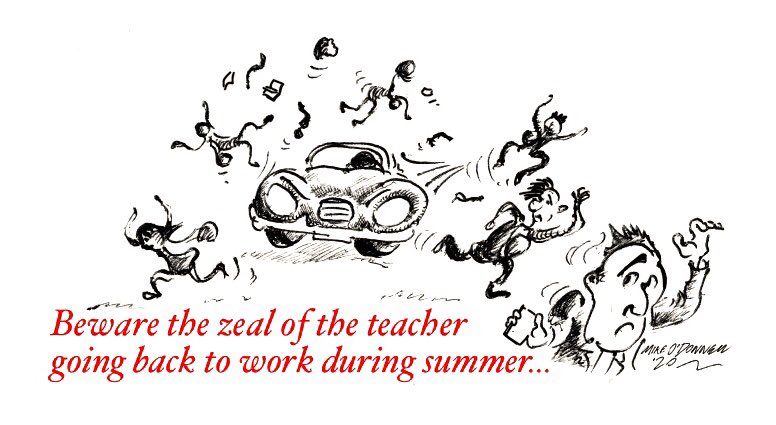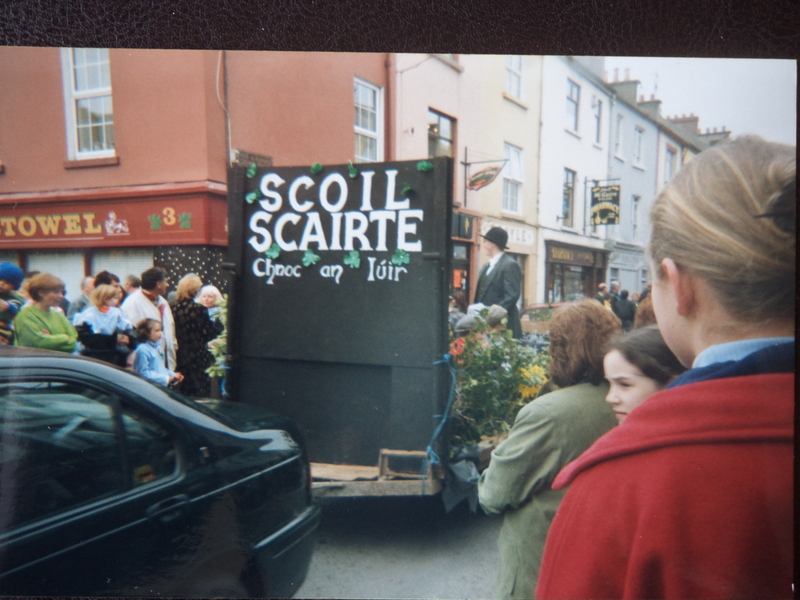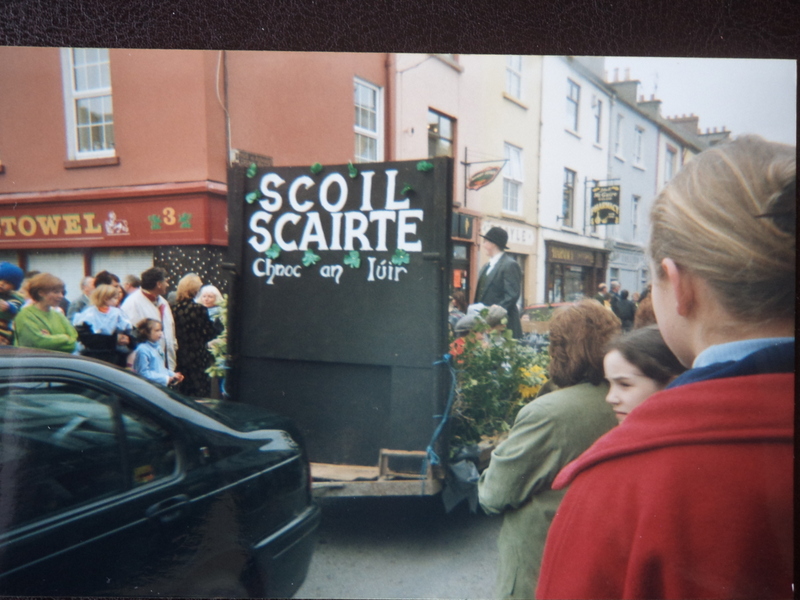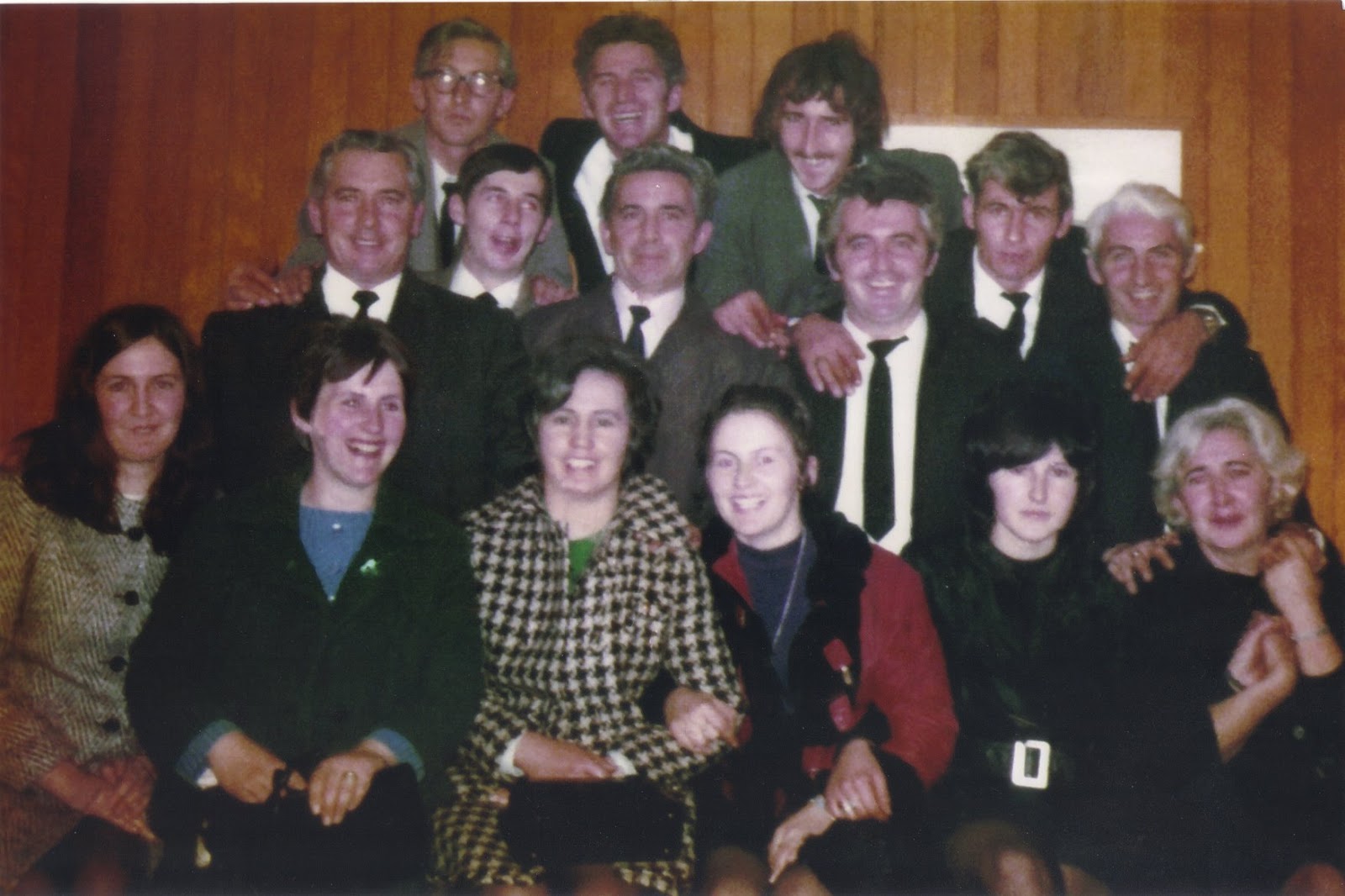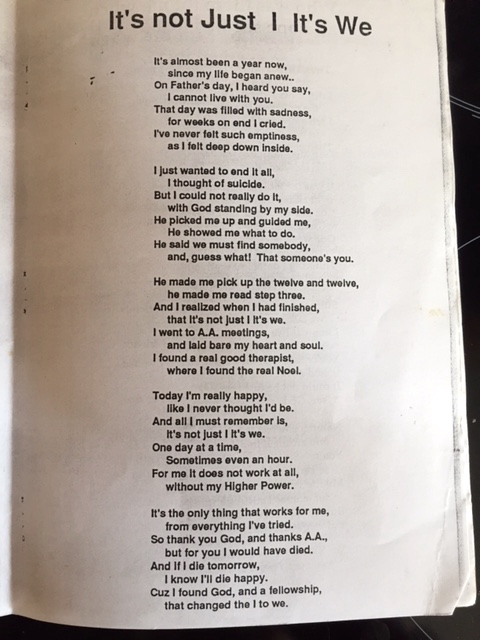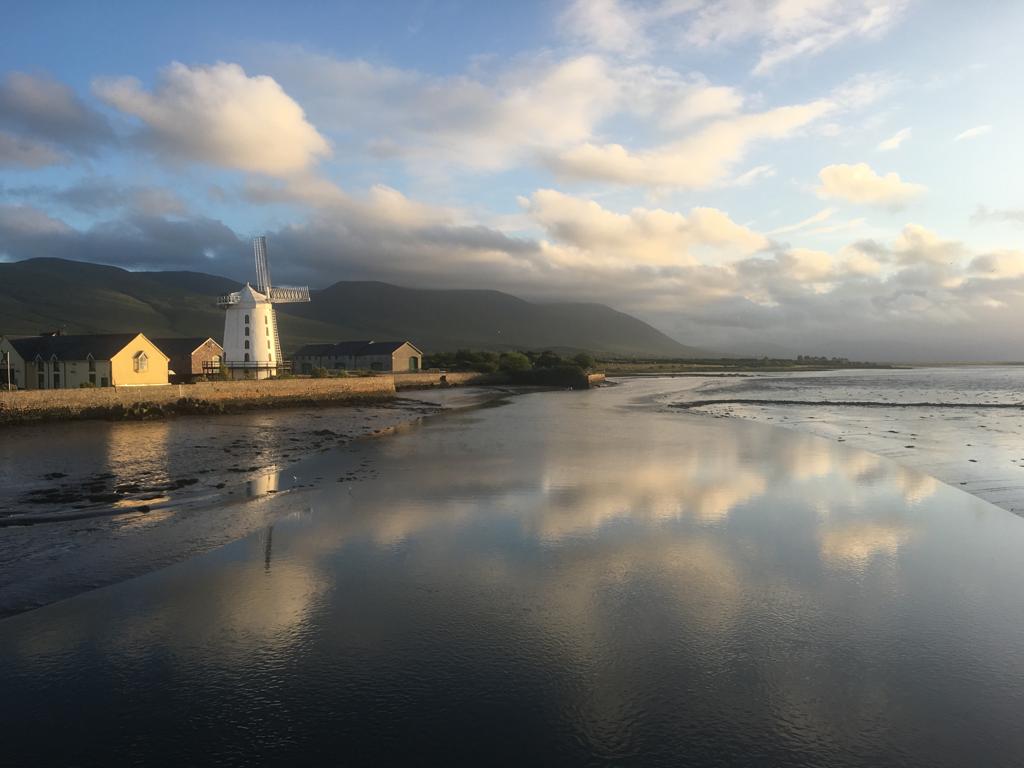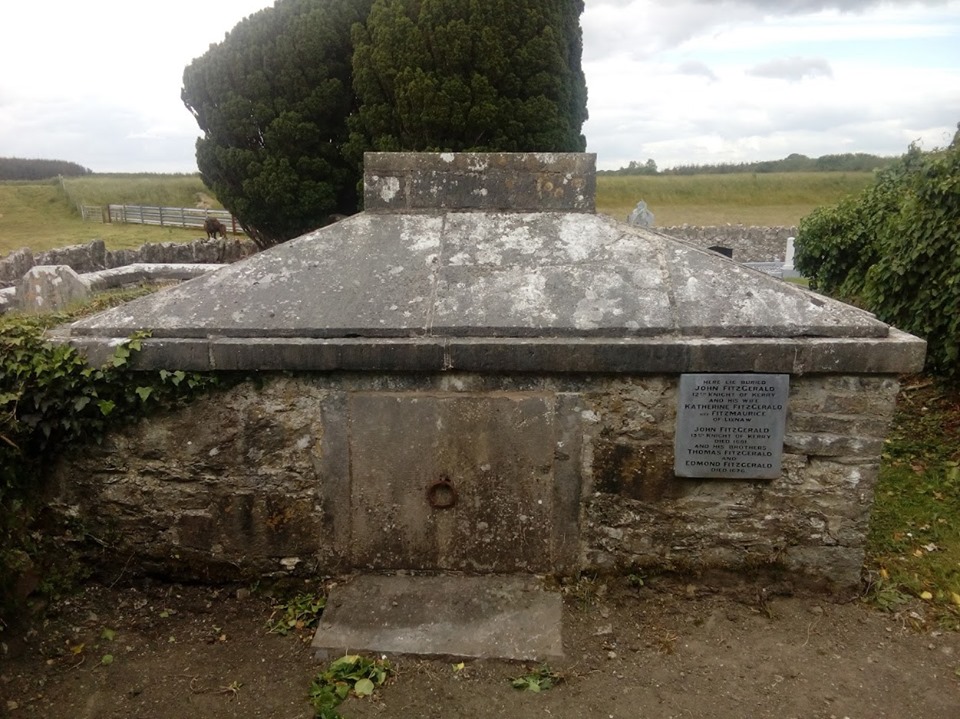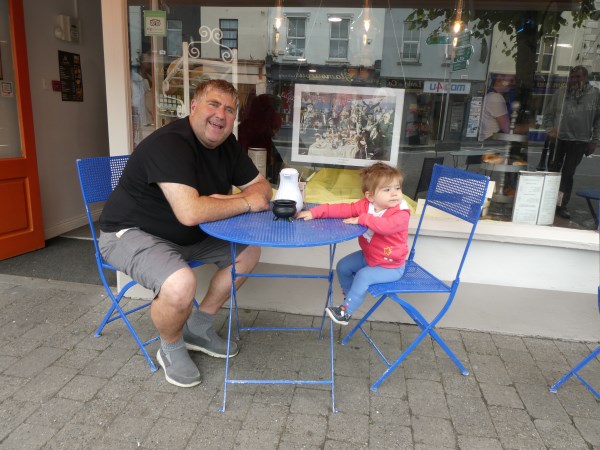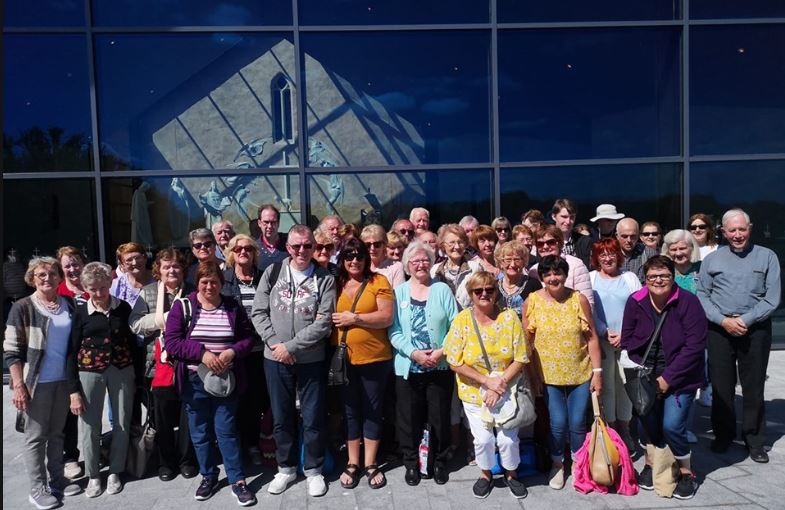
Kanturk, my hometown. was looking good when I visited last week.
<<<<<<<<
A Few More from the Launch of Moments of Reflection

Billy and Owen having a chat

The McKenna family from Newbridge made the trip to be part of the event.

My old knitting club friends, Mary and Maria

Liz and Jim Dunn with their page from the book
<<<<<<<<
Remember this?

I found this on the internet and there was no location given. Queues like this were once a familiar sight at every creamery in the country.
<<<<<<<<
At the bookclub in Kanturk Library

I called in to tell my Kanturk friends that I will be launching my book in The Temperance Hall in Kanturk on October 24 at 7.30
<<<<<<<<

<<<<<<<<<
A Treasure from Jer Kennelly’s Knockanure blog
HISTORY OF THE HILLS AND VALLEYS THAT SURROUND KNOCKANURE CHURCH YARD
By John Murphy.
The churchyard on Knockanure hill encircled by a large field affords a commanding view of the surrounding countryside. Rich in natural beauty history and local lore.
Here is a roofless church where people prayed over 400 years ago. Down by the side of the hill is friars field in Barretts land where some Dominican monks found shelter after the Cromwellian wars and lived there up to around 1804. Just a few fields away is the memorial to the three men who died at Gortaglanna. Pat Dalton, Paddy Wash and Lyons from Duagh the white cross marking where Mick Galvin was killed in the Kilmorna ambush of 1921 can be seen a short distance away.
The broad wooded valley of the Feale. ..The wood is the only thing that is left of the beautiful oO’Mahony Estate. The great house went up in smoke. Its resident at the time, Sir Arthur Vicars, was shot dead. The river Feale flows in a graceful curve before it seems to lose itself forever in the woods of Ballinruddery, the home of the knight of Kerry. The castle still stands proudly in all its ruined glory. One old manuscript relates that the river got its name from Princess Fial. Out of modesty she went into deep water to avoid a gaze of a man and was drowned. Her husband, a prince, decided to name the river in her memory.
On the hill of Duagh can be seen a grove surrounded by a ditch. This is a Killeen, a burial place of unbaptised infants. Gorge Fitzmaurice, the playwright, lived near Duagh village. His plays portray the life style of the north Kerry rural scene a hundred years ago.
In the hill beyond Duagh the river Smerla has its source. It flows down to meet the river Feale near Listowel. In 8 miles of its fertile valley, some 40 young men answered the call to the priesthood mostly in the 1920s to the 1950s period. In their youth they fished the Smerla. They became fishers of souls all over the world.
On their farm in Ballyduhig on Smearla hill lived a leader of the Wexford insurgents of 1798. His wife was Jane Foulks. She eloped with McKenna. One of their daughters married William Leahy of Benanaspug. Jane Foulks is believed to be buried in Kilsinan cemetery.
Looking east, a ring of hills enclose the valley of the Infant River Gale the village of Athea is hidden from view by Knockbawn . The Limerick border is just two miles from Knockanure Churchyard. Names such as Mullanes, Histons, Sheahons and many others from Athea townlands are engraved on headstones within the cemetery.
Pages of History could be filled of the exploits of Con Colbert who died in 1916, Paddy Dalton who was killed at Gortaglanna, the Ahern brothers of Direen who beat all comers at the Olympic games nearly one hundred years ago. Professor Danaher an authority on antiquity, Fr Tim Leahy whose book beyond tomorrow gives a colourful account of his youth in Athea and his many adventures as a priest in China. According to historical records the hills of Glenagraga, Knocknaclogga, Knockfinisk, Rooska must have been devastated during the Desmond rebellion of 1580. One account states that in a wood near Clounlehard three hundred men women and children were killed. Looking towards the north we have a good view of all that was left of the O Connor heritage at the time of Cromwell from being the chief of all north Kerry the were reduced to the lands of Ballylongford Tarbert, Moyvane and Knockanure. The remaining O Connor land was confiscated and given to Trinity College. John O Connor was hanged in Tralee. Teig O Connor was hanged in Killarney along with Fr Moriarty.
The Sandes were appointed land agents for Trinity College. Outlined near the bright waters of the Shannon the battered castle of the O Connors can be seen. When it surrendered in 1580 its garrison of about sixty were hanged.
In the Abbey of Lislaughtin nearby three aged monks were murdered. A tragedy of a different nature accrued here in 1830 when the Colleen Bawn was taken in a boat trip to her death on the waters of the Shannon. On a clear day the ruins can be seen on Scattery Island. The tallest skyscrapers in Ireland pierce the sky on the Clare coast, the chimneys of Moneypoint also the lesser ones of Tarbert.
Ballylongford can claim one of the men of 1916 the O Rahilly. In a low-lying part of Moyvane where floods once almost submerged his home lived Eddy Carmody he was shot by the tans in Ballylongford in 1921. His nephew is a bishop in the U.S.A. Another Moyvane bishop Collins in Brazil. One of those green fields brings back memories of the many great football matches played there. Moyvane was the homeland of all Ireland players Con Brosnan son Jim, John Flavin, Tom Mahony and the O Sullivan’s.
There where the Anomaly flows to meet the Gale half mile from Moyvane village was born the father of Tom Moore, Ireland best known poet of the last century. Having attended local hedge schools, he settled down in Dublin. One of Tom Moore’s poems, by the Feales waves was said to be composed at Kilmorna on a visit to Pierce O Mahony. It relates the tale of romantic love, when the young Earl of Desmond having lost his way, entered the home of a man called McCormack he fell in love with his daughter. When they married, they were forced to immigrate to France.
“Love came and brought sorrow with ruin in its train,
But so deep that tomorrow I’d face it again.”
All the Moore’s are said to be related. The white Boys were active in the district during the early 1800 a suspected Whiteboy was arrested at Keylod he was hanged at Knockanure village. The upturned shafts of a car was the Scaffold. Blake lived where Lyons Funeral Home now stands. In fact, he gave his name to the cross. He was singled out to be shot. He was usually seen through the window at nightfall reading in the parlour. It was decided to shoot him while he read. Lucky for him an informer told him of the plot. He dressed a dummy, placed it in the parlour, hid himself in a bush outside the window and waited for the Whiteboy. It is claimed that Blake shot the man who attempted to shoot the dummy in the parlour. Blake is buried here in Knockanure, no trace of the tomb now remains.
A relative of his, the most famous Kerryman of all time Field Marshall Lord Horatio Kitchener was born at Gunsboro, grew up at Crotta near Lixnaw. He was a remarkable man. One of the great generals of his time. He died at sea after his ship was torpedoed in 1916.
On crossing the fort Lisafarran the veiw westwards opens up. This fort was planted with oak in days gone by. Other forts in the area Lisnabro, Lisapuca, Lisheendonal and Lisroe. Many more forts have disappeared over the years the large fertile land that surround the church yard was the Glebe or church lands.
Just a mile a way spreading far and wide is the bog of Moinveanlaig.The story goes like this a troup of solders were lured into the bog by a piper hidden in a deep hole. The soldiers were attacked and most of them were killed the crying of the wounded and the dying who were left to die for days gave the name to the bog, The bog of the crying, in Irish moinveanlaig..It was thought that was to this bog that Con Dee ran for his life. He had already jumped several ditches, ran across half a dozen fields. picked up a bullet wound in the leg, ran in the front door of a house in the bog lane and ran out the back, asked for a cup of water but did not wait.When he reached Coilbee he was rescued by Donal Bil Sullivan.
A month later Jack Sheahan of Coilbee ran into the bog when he saw a lorry of solders, several shots were fired at him but missed. Finally at five hundred yards he was shot. Today a cross marked the spot Knockanore hill shut off the view of the mouth of the river Shannon. Close by in Asdee lived the ancestors of the famous American outlaw, Jesse James. Jesse finally met a violent death shot by one of his own.
THE POET SAYS:
Breathe there a man with soul so dead.
Who never to himself hath said
This is my own my native land
The pleasure of standing on a hill such as this
The pleasure of projecting associations that surround us
The events tho sad they’re of the past.
John Murphy
http://www.geocities.ws/dalyskennelly_2000/churchyard.ht
<<<<<<<
A Fact
The Lartigue monorail between Listowel and Ballybunion ceased its run 100 years ago.
<<<<<<<<











